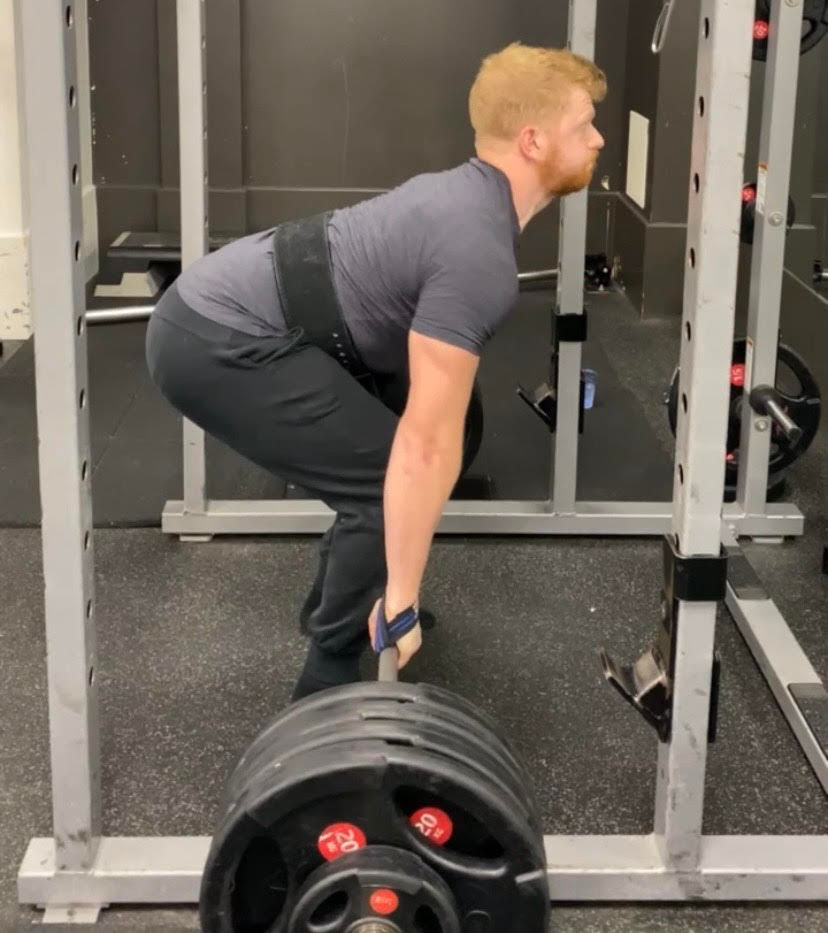Should I Deadlift?
- Robert Hemingway

- Jun 1, 2021
- 3 min read
Deadlifts are an exercise that requires the perfect form. Please seek guidance from a qualified professional before attempting.

The benefits of adding Deadlifts to your usual training routine will shock you into adding them before you even reach the end of this article! See below for a few enticing examples:
They burn a large number of calories
Incorporates every muscle in your body
Improves posture
Improves bone density
Strengthens your core
Strengthens your glutes
Now there are lots of benefits when it comes to Deadlifting. But they’re not for everyone!
For example; If someone was to have scoliosis, they would be advised not to Deadlift (unless under very strict guidance)
If you have a condition that holds you back from performing Deadlifts, do not fret, for there are many other exercises that will tremendously aid a fitness journey.
What Weight Should I Lift When Deadlifting?
The answer to this question depends upon each individual personally. Depending on the person and their mobility/strength; I’d recommend starting on a 10-20kg bar (ensuring the starting position is about 9” from the floor). Please perfect the technique before increasing the load.
The Deadlift is a high-risk movement, so please ensure you are performing them correctly. Do not lift a weight that doesn’t allow correct form.
As you now know, the Deadlift is a great movement. But too much of anything is always a bad thing. To reap the benefits of the Deadlift, I advise deadlifting up to 1-2 days a week (ensuring that you’re following a strict plan, with room for recovery)
Deadlifts are a highly fatiguing exercise, therefore I will always advise lots of room between each Deadlift session to ensure recovery is complete.
Want to Make the Deadlift Tougher?
See below for some clever ways to incorporate progressive overload!
Increase the weight! …
Slow the movement down
Perform Pause-Deadlifts (Lifting, then pausing at your shins for a second, before finishing the rep at the top)
Silent Deadlifts! Lifting without making any sound whatsoever (These require extreme control)
Stand on a slightly raised platform, this will allow a greater deficit for your lift.
Maybe You’d Prefer to Make the Deadlift Easier?
It’s all good making things tough, but making things easier is part of the fun!
Wear a belt
Heighten the starting position of the weight.
Follow the tougher options to get stronger, in turn making deadlifts easier!
Train your grip, or invest in some wrist wraps.
Master the form.
Strengthen your Squat.
Follow a structured plan of action
All in all, Deadlifts are great. If you’re looking to spice things up, build some strength and burn some calories, then I recommend Deadlifts! If you cannot perform Deadlifts, then see below for another recommendation!
The Dumbbell Thruster
The dumbbell thruster is a compound exercise that combines the squat with the shoulder press. This is a very complete and versatile exercise that strengthens your entire body and improves your aerobic fitness, stamina and endurance! If you’re looking to burn calories and build muscle, then this needs to be a part of your training plan.
What are the Key Benefits of the Dumbbell Thruster?
An amazing exercise that would compliment almost every training style! Want some benefits? See below.
Burns a Ridiculous Amount of Calories.
Builds Glute, and Shoulder Strength.
Improves the Cardiovascular System.
Strengthens your Core
Once again, there will be a minority of people that are unable to perform the dumbbell thruster. If you have pain whilst squatting, or shoulder issues whilst shoulder pressing, then I either advise against them or look into getting some qualified guidance to ensure the correct form is performed.
The dumbbell thruster is a movement that is easily performed incorrectly. This is because it's technically 2 exercises in 1, and the fatigue that it causes can cause your form to break down.
Please always ensure that when you’re lifting weight, that you are not working till absolute failure! Working this far into your fatigue levels can cause injuries, which are easily avoided.


























Comments